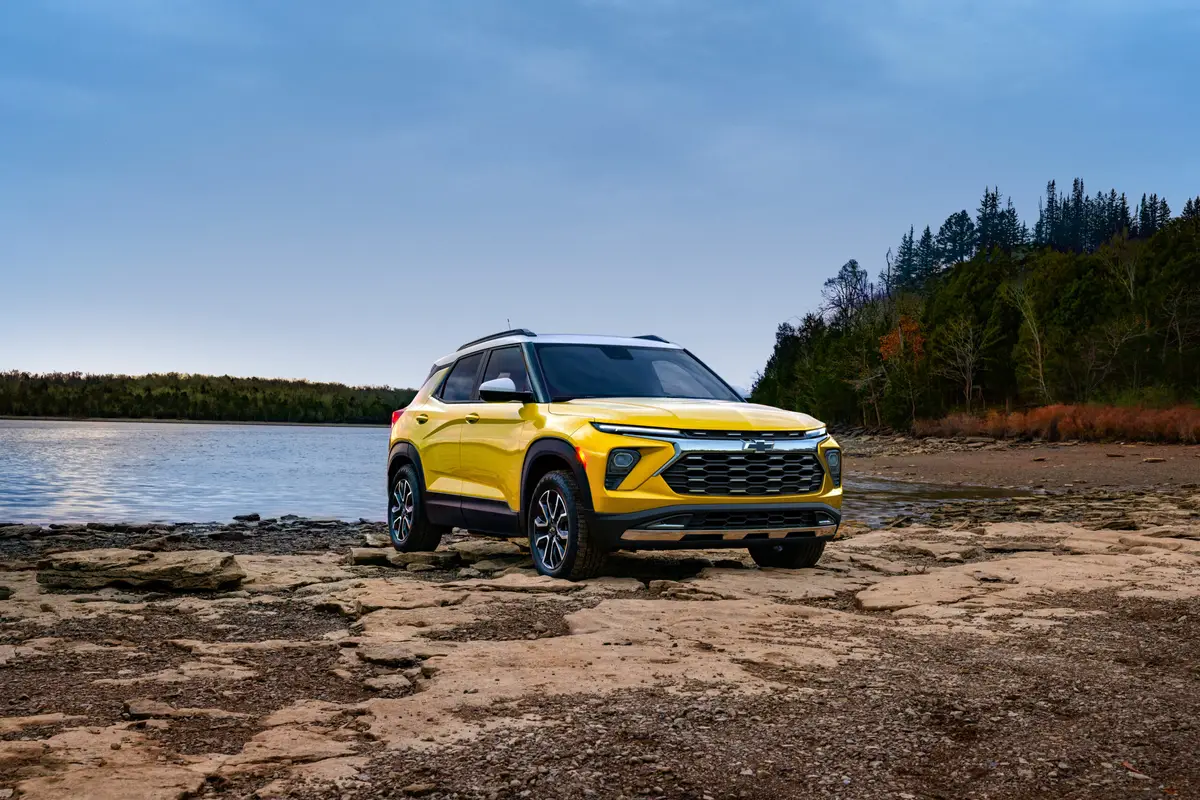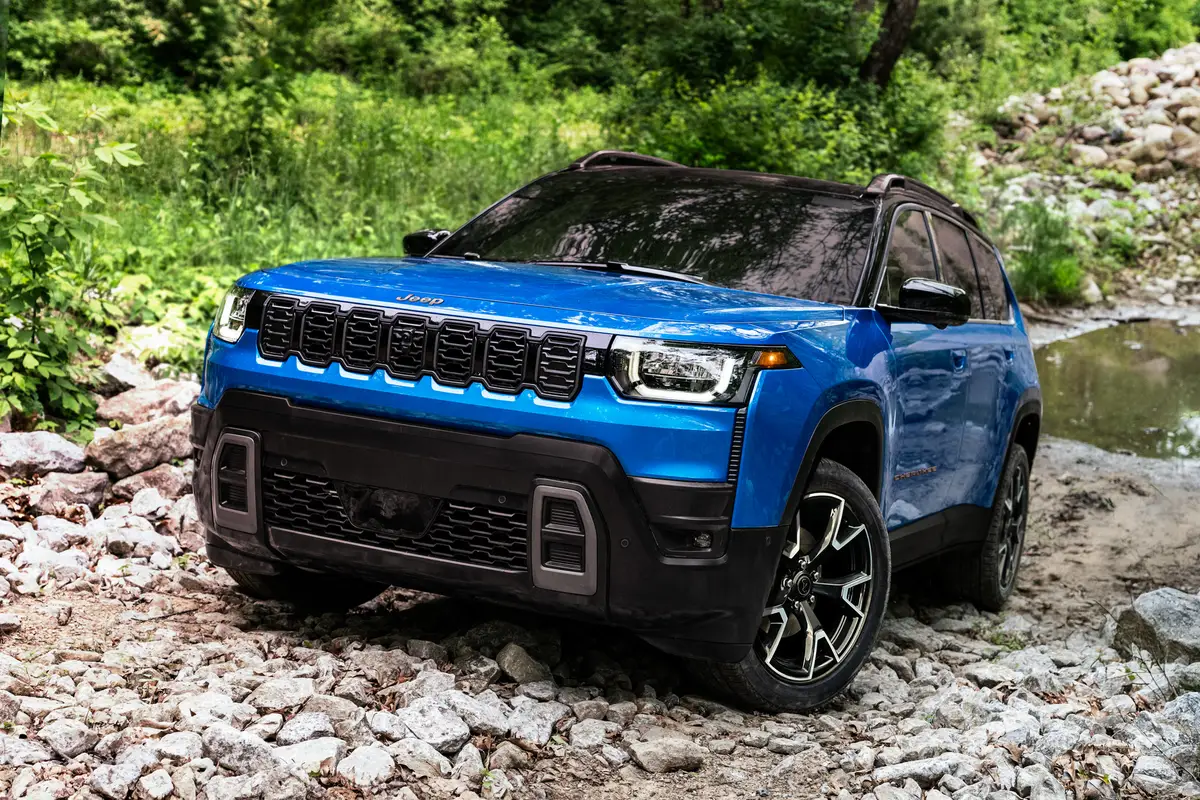Detroit Newspapers's view
Although little Hyundai hasn’t been gobbled up in the Monopolyesque consolidation frenzy that’s galvanized the auto industry the past few years, the Korean carmaker has been quietly gaining ground over the last five years with a series of surprisingly competent products.
The Santa Fe seems to be yet another of them.
That word “little” is a relative characterization here, of course.
Compared to giants like Ford, General Motors, Toyota, and DaimlerChrysler, Hyundai is almost a cottage industry.
On the other hand, it’s one of South Korea’s major industrial concerns, big and successful enough to have swallowed Kia a couple of years back, when its Korean rival fell on hard times.
Hyundai started at the bottom of the American market 14 years ago and has been adding bigger, more sophisticated offerings ever since.
Thus the Santa Fe represents a logical, if somewhat tardy, element in Hyundai’s product planning, since the company had never offered a sport-utility.
There’s irony in this, because Kia, the struggling subsidiary, has offered a small sport-utility, the Sportage, for several years.
However, there has been no product consolidation between Hyundai and Kia so far in their short marriage.
Unlike the Sportage, the Santa Fe follows current small sport-utility trends with a unitbodied approach (integrated frame rails and body shell) that incorporates front-drive passenger car hardware.
In this case, the foundations began with Hyundai’s midsize Sonata sedan.
With the Sonata parts bin as the wellspring, design responsibilities were handed over to Hyundai’s California studios, which makes plenty of sense, since this vehicle was conceived specifically for the U.S. market.
I think it’s fair to say that the front end of the Santa Fe — the only portion of a sport-utility that leaves much room for stylistic creativity — doesn’t look much like any of its competitors and, further, that it looks pretty cool.
There’s enough of a hint of Tiburon — Hyundai’s little sport coupe — in the fenders and headlights to make the Santa Fe look reasonably sporty. But the exaggerated lower bumper, lower body cladding, tall profile and generous ride height satisfy expectations for sport-utilities.
The individualism carries over inside, too, with a dashboard some might call a little busy, thanks to a unique collection of planes, lines and curves, but it definitely avoids the flat-faced pickup truck instrument panels that still afflict some sport-utilities.
Hyundai’s tasteful blend of earth tones and charcoal accents dresses things up nicely, the control layout and design are worthy of a Honda and the use of legible-at-a-glance white-on-black analog instruments is a welcome counterpoint to the current trend toward black graphics on white faces.
Hyundai has done a nice job of creating a functional setup for the driver. The interior manages to feel roomier than it actually is, thanks to the Santa Fe’s extra-wide proportions.
Although most of the Santa Fe’s dimensions are all but identical with those of the popular Honda CR-V — its wheelbase is within a tenth of an inch, it’s four-tenths of an inch shorter overall, and it’s exactly the same height — the Hyundai is 3.7 inches wider.
That pays off in extra shoulder and elbow room, as well as greater interior space.
There’s a good-sized cargo compartment behind the rear seats and, like all sport-utilities, the rear seats fold flat to expand capacity.
Dynamically, the Santa Fe falls somewhere in the middle in most scoring categories.
The combination of enough ground clearance to tackle moderate off-pavement driving — 8.1 inches — plus suspension tuning skewed to a smooth ride yields handling responses that are a tad reluctant in quick maneuvers.
Like most of its competitors, this vehicle’s all-wheel-drive system is designed for everyday security in al weather, rather than dealing with moonscapes or swamps.
The system operates in front-wheel drive until sensors indicate slippage, whereupon it begins apportioning power to the rear wheels — up to 40 percent.
There are no transfer case shift levers, no buttons to push, no differentials to lock, and judging by its performance on a variety of graded roads I’d say the Hyundai system functions adequately at the very least.
Adequate also describes the straight-ahead performance of my well-equipped test truck, but this is the scoring category where adequate equates with slightly disappointing. It should be better.
The Santa Fe offers a choice of two engines — a 150-horsepower 2.4-liter four-cylinder and a 2.7-liter V6 rated for 185 horsepower and 187 foot-pounds of torque.
That’s pretty robust output for this class. Only the new Ford Escape and Mazda Tribute V6 engines offer more snort. But it’s emasculated to a considerable degree by the Santa Fe’s porky curb weight.
A basic front-drive Santa Fe weighs in at 3,450 pounds, 200 more than a Honda CR-V.
With all-wheel drive and the four-speed automatic that goes with the V6 engine, the total climbs to a chunky 3,700 pounds.
How Hyundai managed to make this little guy so chubby — some 200 pounds more than a V6 powered, all-wheel-drive Escape, no wraith itself — beats me. But all that mass extracts a toll every time the driver tramps on the gas.
Look for 0-to-60 m.p.h. times in the 9.5-second range. That means two-lane passing requires planning and creates a fair amount of intake noise at full throttle.
On the other hand, in most other operating situations — freeway driving, boulevard cruising, trundling a few miles of gravel road en route to a vacation cabin — the Santa Fe seems to be competitively composed, comfortable and reasonably quiet.
Like its increasingly numerous competitors at the small end of the scale, it has its limits — cramming five adults inside would require exceptional good will among the back-seaters, and you won’t be able to tow much of anything.
But with the exception of excessive mass, it looks like Hyundai’s first sport-utility is on target and distinctive enough to stand out from the crowd.
I expect the Santa Fe will follow this company’s policy of lots of goodies for the money; we’ll have to wait and see on pricing specifics. The prices in the specifications box are estimates provided by Hyundai.
Nevertheless, Hyundai is in a game it previously watched from the sidelines.
And if the Santa Fe doesn’t quite represent a straight flush, it’s a long way from aces and eights.
SPECS
Rating: No rating for pre-production vehicles
Vehicle type: Front-engine, all-wheel-drive compact sport-utility
Key competitors: Chevrolet Tracker, Ford Escape, Honda CR-V, Kia Sportage, Mazda Tribute, Subaru Forester, Suzuki Vitara
Bas e price: $18,000 (est.)
As tested: $23,000 (est.)
Standard equipment: Air-conditioning, AM/FM/cassette audio, power windows, power locks, power mirrors, tilt steering, aluminum alloy wheels
Specifications
(Manufacturer’s data)
Engine: 185-h.p. 2.7-liter V6
EPA fuel econ.: 19 m.p.g. city, 23 hwy.
Curb weight: 3,700 pounds
Wheelbase: 103.1 inches
Length: 177.2 inches
Width: 72.6 inches
Height: 65.9 inches
Where assembled: Korea
Latest news



